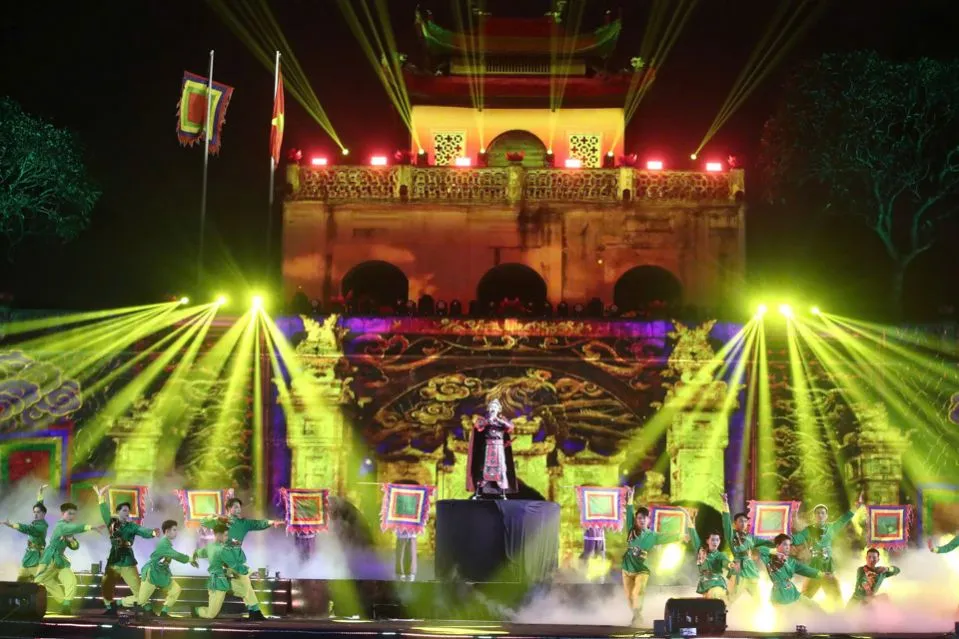Tuong art, a precious intangible cultural heritage of Vietnam, is more than just stage performances; it’s a treasure trove of history, culture, and art. So, how can you fully and deeply appreciate Tuong? Join “Du lịch khắp thế gian” (Travel Around the World) to discover the secrets to experiencing the beauty of traditional Tuong art.
Tuong, also known as hat boi, is a unique traditional Vietnamese theater form. With a long history of formation and development, Tuong has become an indispensable part of the spiritual and cultural life of Vietnamese people, especially in rural areas and major cities. To truly understand and love Tuong, we need to equip ourselves with certain knowledge and skills.
Learn About Tuong History and Culture
To appreciate Tuong deeply, understanding its history and development is crucial. Where did Tuong originate? Who are the famous Tuong artists in history? What stages of ups and downs has Tuong gone through? Answers to these questions will help you better understand the cultural and artistic values that Tuong brings.
Tuong art is not simply stories told on stage but also a true reflection of Vietnamese society, history, and people. Each Tuong play carries profound messages about morality, human values, and patriotism. Learning about the historical and cultural context of each play will help you feel the true meaning that the author wants to convey.
Recognize Different Types of Tuong
Tuong is not a monolith but is divided into many different types, each with its own characteristics. There is tuong do (teacher’s tuong), tuong pha (mixed tuong), tuong hai (comic tuong), tuong kiem (martial tuong), and more. Recognizing and distinguishing these types of Tuong will give you a more comprehensive view of Tuong art.
Each type of Tuong has its own rules and performance techniques. Tuong do often focuses on historical stories and heroic figures, while tuong hai brings refreshing laughter and life lessons. Understanding these characteristics will help you better appreciate the talent of Tuong artists and the artistic value of each performance.
Understand Tuong Music and Costumes
Music and costumes are two essential elements in Tuong art. Tuong music uses traditional musical instruments such as drums, moon lute, two-stringed violin, trumpets, etc., to create distinctive melodies suitable for each character and performance situation. Tuong costumes are meticulously and elaborately designed, with many different colors and patterns, helping the audience easily recognize the role and personality of each character.

To fully appreciate Tuong, you should learn about the meaning of each type of musical instrument and each detail on the costumes. For example, the sound of drums can symbolize power, authority, or suffering and loss. Colors on costumes can also represent social status, personality, or the fate of the character.
Pay Attention to Actors’ Language and Gestures
The language and gestures of the actors are key factors in the success of a Tuong play. Tuong language often uses historical allusions, idioms, and philosophical sayings. Actors’ gestures are also strictly regulated, from walking, standing, sitting, to expressing emotions on their faces.
Understanding the meaning of each line and gesture will help you grasp the content and message of the Tuong play most accurately. Sometimes, just a look, a frown, or a hand gesture can convey deep emotions and meanings that words cannot fully express.
Find Reputable Tuong Performance Venues
To have the best Tuong viewing experience, you should find reputable Tuong performance venues with professional artists and guaranteed facilities. Some famous venues in Vietnam include the Vietnam Tuong Theater, Tuong theaters in provinces and cities, or traditional cultural festivals with Tuong performances.

In addition, you can also learn about Tuong clubs or Tuong classes to have the opportunity to interact, learn, and experience this art form practically. Participating in these activities not only helps you understand Tuong more deeply but also contributes to preserving and promoting the nation’s traditional cultural values.
Open Your Heart and Feel
Finally, the most important thing to appreciate Tuong is to open your heart and feel. Let the melodies, dialogues, and gestures of the actors touch your heart. Try to understand the messages that the Tuong play wants to convey and reflect on the moral and human values it brings.
Tuong art is not just a form of entertainment but also a means for us to connect with the past, better understand the present, and move towards a better future. By appreciating Tuong fully and deeply, we not only enrich our spiritual lives but also contribute to preserving and promoting the precious cultural values of our nation.
Conclusion
Appreciating traditional Tuong art is a fascinating and meaningful journey of discovery. By learning about Tuong’s history, culture, music, costumes, language, and gestures, you will be able to feel the beauty and true value of this art form. Open your heart and let Tuong touch you, and you will discover a world of art that is extremely rich and profound.